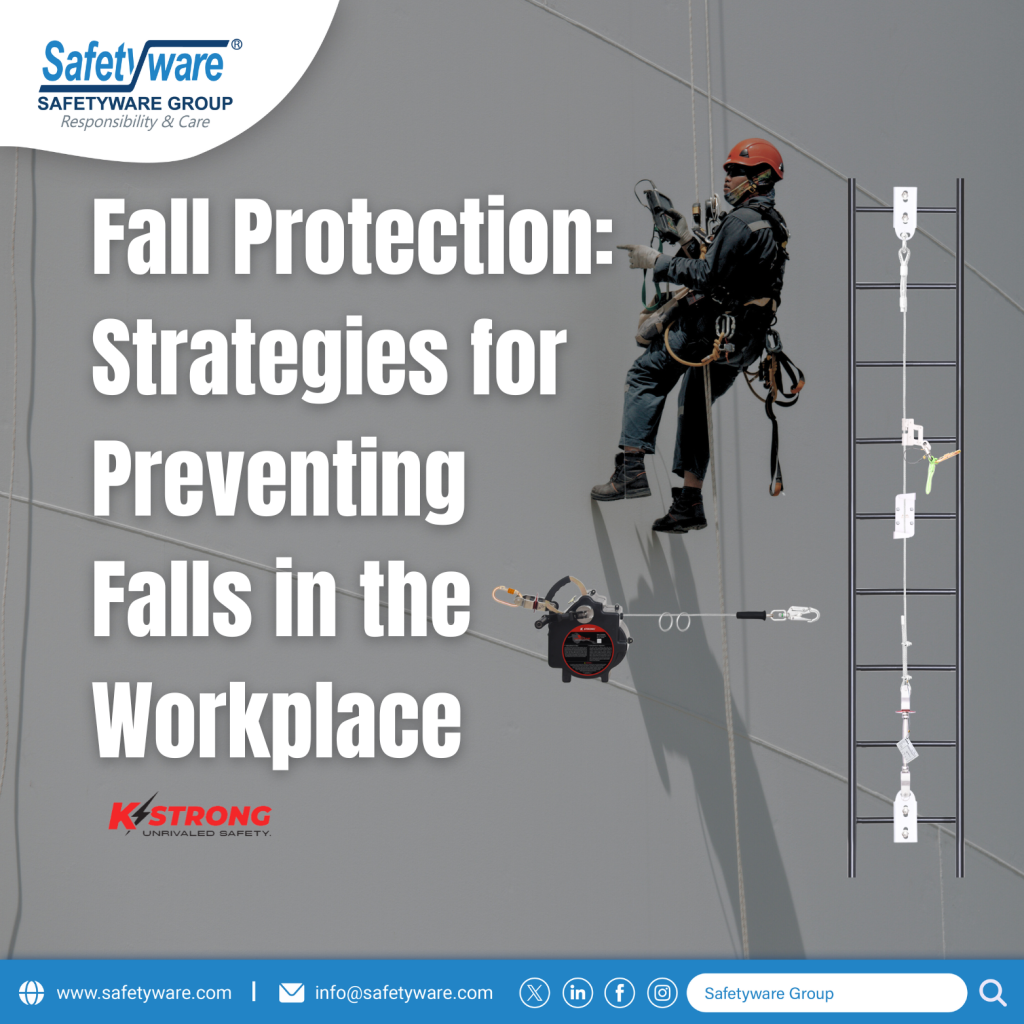Falls are a significant hazard in many workplaces, leading to injuries and fatalities. Implementing effective fall protection strategies is crucial to ensure the safety of workers. Here are some key points to consider:

1. Risk Assessment: Conduct a thorough risk assessment to identify potential fall hazards in the workplace. This includes assessing elevated work areas, roofs, ladders, scaffolds, and any other areas where falls could occur.
2. Hierarchy of Controls: Follow the hierarchy of controls to address fall hazards. This includes eliminating the hazard, if possible, followed by substitution, engineering controls, administrative controls, and finally, personal protective equipment (PPE).
3. Training and Awareness: Provide comprehensive training to workers on fall hazards, safe work practices, and proper use of fall protection equipment. Ensure that workers are aware of the risks and how to mitigate them.
4. Proper Equipment: Select and provide appropriate fall protection equipment based on the specific work environment and tasks. This may include harnesses, lanyards, guardrails, safety nets, and anchor points.
5. Regular Inspections and Maintenance: Regularly inspect and maintain all fall protection equipment to ensure it is in good working condition. Replace any damaged or worn-out equipment promptly.
6. Safe Work Procedures: Develop and enforce safe work procedures for tasks involving potential fall hazards. Ensure that workers understand and follow these procedures at all times.
7. Emergency Response Plan: Have an emergency response plan in place in case a fall incident occurs. This plan should include rescue procedures and first aid protocols.
8. Continuous Improvement: Regularly review and update fall protection strategies based on feedback, incident reports, and changes in work processes or equipment.
By implementing these strategies and fostering a culture of safety, organizations can effectively prevent falls in the workplace and protect the well-being of their employees. Remember, safety is everyone’s responsibility.
